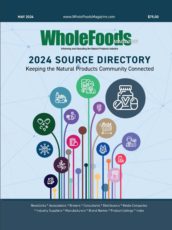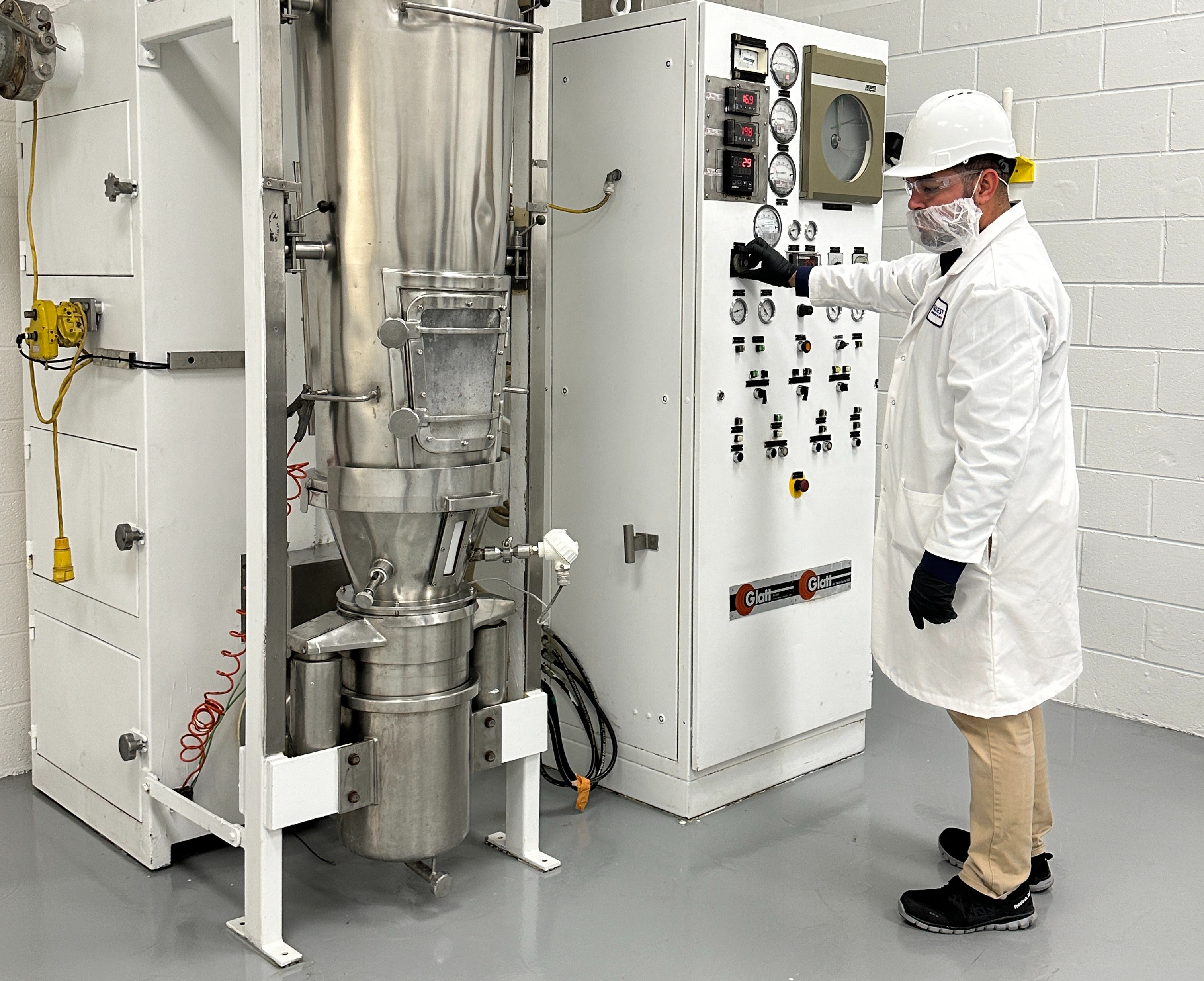Your customers’ active lifestyles may translate into a great deal of interest in sports supplements and an opportunity to cross-merchandise. The category is also expanding to reach a broader demographic, not just bodybuilders or hardcore athletes. Here is what you need to know to help your customers understand the benefits of sports nutrition, clear up misconceptions and inform seasoned users of important changes in the category.
Popularity Means Greater ScrutinySports nutrition is both a popular and controversial category. Duffy MacKay, N.D., senior vice president of scientific and regulatory affairs, at the Council for Responsible Nutrition, Washington, D.C., explains that sports nutrition can be divided into various subcategories such as pre-workout, bodybuilding and weight management. These categories are targets of scrutiny by the U.S. Food and Drug Administration (FDA) as unscrupulous manufacturers like to take advantage of vulnerable consumers seeking results in these areas.
“FDA has publicly identified three categories of products that are at high risk for adulteration. These are weight loss, bodybuilding and erectile dysfunction. FDA has tested and identified hundreds of products in these categories that have been illegally adulterated with prescription ingredients,” says MacKay.
Recently, a proposed (but voted down) Massachusetts house bill would have restricted access to sports supplements for minors by placing them behind store or pharmacy counters and required posting warnings about the dangers of these supplements (2).
The reasoning behind the proposed Massachusetts house bill is not entirely flawed, as less informed young people are more vulnerable to unscrupulous manufacturers. “Younger consumers are definitely targeted by sports ‘supplement’ companies,” says Gerald Cysewski, Ph.D., president, chief executive officer, and chief scientific officer of Nutrex Hawaii, Kailua-Kona, HI. “These companies oftentimes are not legitimate supplement companies, and are marketing products that contain unapproved ingredients. However, these instances are not common and do not represent the majority of dietary supplement companies.”
While it is important to prosecute and remove illegal products that are adulterated and dangerous to consumers, the vast majority of supplement manufacturers are very responsible.
How can retailers make sure shoppers trust the quality of products in their stores?
1. Stress GMPs.“FDA current Good Manufacturing Practices (cGMPs) for manufacturing dietary supplements have been put in place to ensure quality throughout the manufacturing, packaging, labeling and storing of dietary supplement products,” explains Neil E. Levin, CCN, DANLA, senior education manager for NOW Foods, Bloomingdale, IL. “cGMP regulations include requirements for testing of raw materials and finished products, as well as other procedures related to receipt, handling, storage, and labeling of dietary supplement products.”
Whether a company is in line with these regulations can be ascertained by contacting the company directly about its procedures or by referring to the FDA website where public records are kept about inspections and violations, says Levin. This information must be used carefully, however, as receiving a 403B letter does not automatically mean a company is negligent. FDA also lists several unapproved illegal supplement ingredients such as DMAA and BMPEA, which should be avoided. This is a lot of legwork for the average consumer, but is important for retailers to understand so they can safeguard their inventory.
2. Read the labels.Take the time to understand labels. Heather Nelson-Cortes, director of scientific affairs, Glanbia Performance Nutrition, Aurora, IL, offers a rule of thumb of making sure the proteins are listed first and therefore, a make up a majority of protein supplements. “The amount of protein in a product is typically measured by the nitrogen content of the protein. Some products may have certain amino acids added to increase the nitrogen content, thus increasing the protein content,” she explains. “These amino acids can be much cheaper than a whole protein, such as whey, and may not offer the same benefits. Those amino acids will be listed under ingredients on the product label and are sometimes identified as ‘added amino acids.’”
3. Pay attention to certifications.Stocking products with third-party certifications of quality and safety is also very valuable. “There are several great certifications,” says MacKay. “Each one tests for a different set of potential contaminants and has different testing criteria. The best one will depend on the athlete’s specific needs. More rigorous certifications tend to increase the cost of the product because of the extensive testing run on each lot that is certified.”
Quality is particularly important to competitive athletes who have the potential to be tested for performance-enhancing drugs. Third-party certifications verify that products are free of these drugs and won’t compromise their health or their careers.
4. Set reasonable expectations…especially to young shoppers.Shoppers with an idealized vision of what they want their bodies to be often want to achieve results quickly. This, of course, is not the purpose of sports supplements. They are not a shortcut to bigger muscles, but simply provide the body what it needs to better meet the demands of workouts and support recovery.
Young people may be especially vulnerable to “get big fast” marketing because commerce has changed. Younger shoppers are spending less time at retailers and more time shopping online, potentially choosing subpar products that haven’t been properly vetted. That is why retailers should continuously make an effort to reach out to and educate consumers about particular sports nutrition products that have a record of safety, quality and efficacy.
Educational literature may catch the eye of parents of athletes or coaches who have the safety of their children in mind. For that matter, parental supervision is recommended for minors purchasing sports supplements. “All of our products are formulated for persons 18 years of age and up; therefore, we highly recommend that a parent or guardian be present at the point of purchase for those who are younger than 18 years of age,” says Trisha Sugarek MacDonald, BS, MS, director of research and development/national educator at Bluebonnet Nutrition Corporation, Sugarland, TX.
5. Check out new tools.Another resource that will be useful to both retailers and consumers is the upcoming online product registry being created by CRN and set to launch at the end of 2016 (3). While the registry is primarily a way for manufacturers to better communicate with regulators, the public face of registry will be visible to retailers and consumers where they can find product labels, third-party certifications and ingredients.
“At the most basic level, consumers and retailers can do research on products, compare products, look up information about the ingredients, do specialized searches to find exactly what they are looking for,” says MacKay. “Companies that intentionally add illegal ingredients to products are either (a) not going to participate in the Registry or (b) try to lie. Having all of the information in a single searchable database will provide additional resources to identify rogue players that are falsifying information.”
Meanwhile, the Natural Products Association is debuting a separate database for its members to better “monitor and track the top GMP violations by year and see how those trends are changing,” the group said in a press statement. The data includes that from several agencies (like the Department of Justice, the U.S. Food and Drug Administration and the Federal Trade Commission), including warning letters, seizures, injunctions, forfeitures and criminal actions going back to 2008. It is searchable by disease claims/claim categories, misbrandings and other metrics.
These registries can add another level of transparency that reinforces trust between a store and its customers.
The Protein DebateRecently, the protein category has seen a boom in plant-based proteins, meeting the needs of athletic consumers embracing vegan lifestyles or suffering from dietary sensitivities. Diversity in any product category is a good thing, but it also brings up questions among customers. Which is better: plant-based or dairy-based proteins? The answer is, “It depends.”
Let’s start with dairy-based protein, of which, whey is certainly the most popular. Citing a 1997 study published in the Proceedings of the National Academy of Sciences, Sugarek MacDonald explains that the difference between dairy-based proteins whey and casein, is that whey is fast acting and casein is slow acting (4). “Unlike casein, [whey’s] impact on postprandial (i.e., after eating) protein metabolism is fast, high and transient,” she explains. “Whey instigates a rapid release of amino acids within the blood, allowing them to be used effortlessly for muscle enhancement. This is partly because the amino acid profile that makes up whey is very similar to that of human muscle—making it the protein of choice for bodybuilders and athletes.”25% of customers across both genders are purchasing sports supplements in addition to standard vitamins and minerals.
While whey is ideal for enhancing muscles being quickly absorbed and high in branch-chain amino acids (BCAAs), the building blocks of muscle, casein is better for recovery, as it has a slower release and is high in the amino acid, glutamine, which is mostly stored in muscle and becomes depleted after strenuous exercise, requiring replenishment (5).
Their amino acid profile is what makes dairy-based protein such as whey so desirable, with many believing that plant-based proteins cannot achieve the same results. “We’re actually seeing more people sway back [to whey]...People who have been high-performing athletes that switched over to plant based basically didn’t find the same energy levels and were just finding themselves really tired and lethargic from it,” says Elizabeth Poon, director of marketing for Country Life Vitamins, Hauppauge, NY. “I think they are missing some of the key nutrients, the biggest difference we have, which is the natural amino acid profile contained within whey.”
But, Cysewski challenges this notion. “Amino acids are essential for muscle growth and recovery, but the lack of complete aminos is easily fixed when you combine different plant powders like brown rice and pea protein,” he explains, citing additional health benefits to plant-based powders as well. “Since many plant-based proteins are not as heavily processed as whey, they still contain other nutrients besides just protein. For example, brown rice protein is high in fiber and vitamin B while pea protein contains vitamins D, E, K, A—all essential nutrients for daily function. Using spirulina as a protein source probably gives you the most varied nutrient profile, including vitamins A, K, B12 and iron amongst others.”
Nutrex Hawaii’s formula, for example, contains a protein blend of pea, alfalfa, brown rice and Hawaiian spirulina amounting to 16 grams of protein per serving, says Cysewski. It is also modeled after the World Health Organization’s ideal daily amino acid ratios, making it comparable to whey protein in its amino acid content.
The additional nutrients as well as the overall benefits of consuming protein may be reason enough for vegans to utilize a plant-based protein powder, however, for the vegan athlete, it may be just as effective for fitness gains. Levin cites a study in which 24 college-aged males who were resistance trained took either 48 grams of whey or rice protein three days a week for eight weeks (6).
Between the two groups, body composition and exercise performance were the same. The authors state, “Our findings support the proposed hypothesis that higher doses of rice protein (48 g) will be comparable to an equally high dose of whey protein in its effects on body composition and exercise performance after periodized resistance training” (6).
Another thing to consider is digestive sensitivity to dairy. Anurag Pande, Ph.D., vice president of scientific affairs at Sabinsa, East Windsor, NJ, makes a compelling point when he says, “Good digestibility supports compliance.” The switch to plant-based protein may be the right one for many people, and if they feel the difference, they’ll be back for more.
Keeping a RegimenProper nutrition from food is crucial, but for the athlete, sports supplements can make an excellent source of vital nutrients that aid performance, growth and recovery. “Specifying products for before, during and after your workout should not be considered a trend, but rather a revolution of the market focusing on the evolution of nutrition and sport performance,” says Sugarek MacDonald.
Recovery.A majority of experts contacted for this article cited recovery as the most neglected aspect of sports nutrition. “The recovery category has always lagged behind some of the others since most consumers prefer a product they can feel,” says Marc Stover, vice president of sports nutrition and international at Twinlab Consolidated Corp., American Fork, UT. “A recovery product doesn’t always provide that ‘signal’ that it’s working even if it is.” People endeavor to accomplish fitness goals but fail to realize that recovery is crucial to continued success and endurance.
“Many of the same nutrients that are used for energy or performance can also help in recovery, but we fail to ‘stock back up’ on these nutrients as our workout is completed,” says Justin Bingham, product development manager at Trace Minerals Research, Ogden, UT.
Following a workout, muscle soreness is to be expected and with time, will fade, but that does not mean one should not help muscle recovery by replenishing the nutrients depleted during exercise. “Muscle recovery depends on hydration and the presence of nutrients, especially protein,” explains Levin. “Other nutrients are likely to be depleted after a workout, including carbohydrates and electrolyte minerals. There is a window of opportunity for optimal recovery after exercise, which lasts only a couple of hours.”
Cysewski recommends hitting this window as soon as 30 minutes after exercise. “It’s important to be supplementing with protein and quick carbohydrates to ensure that your muscles can undergo proper repair and to ensure that your body will not start using your own muscles for energy (negating any sort of workout gain),” he says.
Protein isn’t the only supplement that can aid recovery, says Cysewski. “Different studies have shown that astaxanthin can help reduce lactic acid levels, resulting in increased endurance, as well as improvement in muscle and joint discomfort,” he explains. Meanwhile, BCAAs are important in the recovery category, says Nelson-Cortes, because they help spare muscle during endurance training “and help kick start the muscle building process after weight training.”
In addition, 30 minutes after workouts, users can supplement with glutamine or collagen. “We basically say, for a lighter workout, having glutamine is what’s needed to help repair your muscles, but when you are doing more endurance and more intense exercise, we would advise you to take the glutamine as well as the collagen recovery complex to help you get through recovery even more quickly,” says Poon.
Timothy Mount, CN, CCMH, director of education for NeoCell, Irvine, CA, agrees that collagen is an important sports nutrition supplement, calling it highly overlooked in the category despite making up a majority of connective tissue and playing a role in joint health. “Many athletes focus on general proteins like whey to supply the body with amino acids for muscle building, but forget to incorporate collagen to guard against injury. Having large muscles and weak joints is a recipe for disaster and can also lead to training plateaus,” explains Mount. “A strained or sore muscle may only take days to heal, but a strained ligament or tendon takes weeks because the body builds collagen fibers slower than muscle fibers. High doses of collagen, in the 6–15 g range, is advisable to support the generation of collagen while training.”The recovery category has always lagged behind some of the others since most consumers prefer a product they can feel. —Marc Stover, Twinlab Consolidated Corp.
Many companies are interested in offering collagen in various delivery formats that are convenient for shoppers, especially athletes. “If you have something that tastes good and readily available to drink, people tend to adhere to the daily dose much better than in pill form,” says Asma Ishaq, CEO of Jusuru International Inc., Anaheim, CA.
Another joint care–sports nutrition product for athletes to consider is MSM. “An active individual relies on their joints and mobility, but they typically do not address these components until later in the game,” states Tim Hammond, vice president of sales and marketing at Bergstrom Nutrition, Redmond, WA. “This brings up an area that sports nutrition brands have yet to aggressively market: prevention, or more specifically joint support and mobility.”
He believes his firm’s branded MSM (OptiMSM) supports joint, muscle and connective tissue health, which can greatly benefit active consumers. It’s also helpful alongside HMB for a synergistic effect on both protein degradation and muscle damage, Hammond says. “Several biochemical processes are affected by both MSM and HMB. Although the results of some studies show similar outcomes for both supplements, there is reason to believe that each acts on the body in its own novel way.”
For Bingham, magnesium is particularly overlooked in sport nutrition, especially for recovery. He says, “When it comes to sports recovery, magnesium is essential for the metabolic breakdown and transport of sugar to the cells for recovery, cardiovascular health and stamina, helping the muscles relax to prevent charlie horses, and relaxes the mind and body to allow for a good night’s sleep, an essential component of effective recovery.”
Sugarek MacDonald also emphasizes timing. Recovery is not just aided by consuming the right nutrients following exercise, but also by continued supplementation prior to and during exercise so that one’s body can properly adapt to the conditions of a strenuous workout. “Studies indicate that replenishing carbohydrate stores during an endurance event helps to maintain glycogen stores while supplementing with protein after a workout expedites recovery,” she explains. “Thus, nutritional timing is critical for individuals looking to optimize the availability of nutrients in an effort to maximize their workout. This is why the phased method (i.e., pre-, during, and post-workout) is superior to just a ‘post-workout shake approach.’”
Pre-workout.Sugarek MacDonald defines the pre-workout period as two to four hours prior to physical activity. Supplementing before exercise is meant to reduce fatigue during exercise, thus creating better endurance. Studies have supported this. In one, 24 recreational athletes were either given 18 g of placebo or a pre-workout supplement consisting of a proprietary blend of whey protein, Cordyceps sinensis, creatine, citrulline, ginseng, BCAAs, arginine AKG, citrulline AKG, rhodiola, vitamin B6 and B12 and caffeine (7).
For three weeks, three times per week, subjects participated in high-intensity interval training, consuming their mixture 30 minutes prior to activity. Compared to placebo, supplementation with a pre-workout formula improved aerobic performance and increased lean body mass in the experimental group (7).
A more recent study tested 12 males who were either given a placebo or multi-ingredient pre-workout supplement 30 minutes prior to activity (8). Subjects’ performance was then measured with a counter-movement vertical jump test, five-repetition maximum back squat and bench presses as well as an anaerobic capacity sprint test to assess peak and mean power. Results showed improved upper body endurance and mean power output during sprints as well as subjective markers for fatigue and alertness (8).
In addition to being of value to recovery, Sugarek MacDonald also recommends supplementing with carbohydrates in the two to four hours prior to exercise. Not only do they improve glycogen stores, but they also maintain blood glucose during the course of exercise. However, consuming complex carbohydrates within an hour of exercise is discouraged. “It can induce hyperinsulinaemia (increase in plasma insulin), which lowers blood glucose and can potentially interfere with athletic performance by causing fatigue,” explains Sugarek MacDonald.
In the space of time closer to exercise, much like in the aforementioned studies, she recommends formulas that contain “simple, fast-acting carbohydrates in conjunction with amino acids (i.e., typically 3 to 6 g) with a focus on arginine, lysine and BCAAs), plus responsible amounts of caffeine [that] spur the body into action—not just physically, but mentally.”
Energy and performance. Pre-workout supplements can provide the boost one needs prior to a workout, but there are a variety of other products that can provide sustained energy, focus and even performance one desires.
“We use green tea extract, and we are using guarana, and then of course, panax ginseng and B vitamins as well, to support the metabolism part of the energy,” says Ishaq of Jusuru’s TRIA Energy. “Then for increasing mental focus we are using an ingredient called TeaCrine, which is actually based on a tea leaf as well but it doesn’t provide caffeine. It provides theacrine.”
Cysewski explains that astaxanthin is a highly well-rounded ingredient supporting energy, performance and recovery, mentioned earlier. He cites a 2011 study in which 21 competitive cyclists were either given astaxanthin or placebo and tested their cycling trial time performance (9). Cyclists taking astaxanthin showed a significant improvement in their 20 km trial time performance as well as a significant increase in power output, compared to placebo (9).
He also recommends spirulina for caffeine-free energy support and performance, stating that Nutrex Hawaii’s protein blend with a full serving of Hawaiian spirulina can help boost energy levels as well as rhodiolia and panax ginseng.
Pande recommends a beetroot extract standardized to 2% nitrates (Sabeet). “Nitrates are known to increase endurance in people by improving the energy output for the oxygen consumed,” he explains. “Sabeet can help improve endurance and prolong the amount of time people can engage in physical activity.”
Another ingredient Pande says is good for supporting energy is green coconut water processed, using a proprietary freeze-drying method, into a powder called Cococin. This powder is packed with minerals, vitamins and plant-based micronutrients and can be used as an ingredient in energy beverages. In other energy beverages, he says, “either there are excess of salts making the medium hypertonic or they contain stimulants such as caffeine or guarana, which can be depleting,” while Cococin has high potassium content and helps individuals rehydrate.
During exercise.Taking the right product during a workout can help increase the longevity and effectiveness. Sugarek MacDonald, again, says that carbohydrates are particularly useful in this regard. “Carbohydrate intake during exercise has shown to have an ergogenic effect on the body by increasing performance in a number of ways such as maintaining blood glucose levels, high CHO oxidation, sparing of endogenous glycogen and synthesis of glycogen during low-intensity exercise,” she explains.
Products composed of complex carbohydrates such as waxy maze, steel cut oats and brown rice, says Sugarek MacDonald, “[are] important because when you are refueling the body you want carbohydrate sources that don’t just temporarily spike blood glucose levels but are steady and provide the cells with ample energy so athletes can go the distance.”
Post-exercise.Coming full circle to post-workout recovery, the intention of taking a complete system of sports supplements is to assist the body through strenuous activity and prepare it for further exercise. “After a good workout, your muscles are starving for nutrients, especially fast-acting carbohydrates and quick-absorbing protein,” explains Sugarek MacDonald. “The goals for the post-workout meal are to (1) achieve an anabolic state, (2) eliminate metabolic waste, (3) replenish glycogen, (4) build muscle and (5) bolster the immune system. However, the window of opportunity opens and shuts very quickly so you need to act fast. One hour after your workout, the window begins to close; after 4 hours, the window is shut!”
In a 2016 article published in PLOS One, researchers studied the performance of cyclists 18 hours after exhaustive cycling. Subjects took either carbohydrates and protein, or carbohydrates alone within a two-hour window immediately after the exhaustive cycling (10). Results showed that future performance was better in the carbohydrates and protein group (10).WF
References
- “The Dietary Supplement Consumer.” Council for Responsible Nutrition. http://www.crnusa.org/CRNconsumersurvey/2015/index.html, accessed 7/26/2016.
- “Massachusetts Bill Prohibiting Dietary Supplements to Minors Fails.” https://wholefoodsmagazine.com/news/breaking-news/massachusetts-bill-prohibiting-supplements-fails/, accessed 7/26/2016.
- “CRN’s Online Product Registry to Launch End of 2016.” https://wholefoodsmagazine.com/news/breaking-news/crns-online-product-registry-launch-end-2016/, accessed 7/26/2016.
- Boirie, et al. “Slow and fast dietary proteins differently modulate postprandial protein accretion.” Proc. Natl. Acad. Sci. 94: 14930 –14935. 1997.
- Wein and Miraglia. “Whey Protein vs Casein Protein and Optimal Recovery.” https://www.nsca.com/Education/Articles/Whey-Protein-vs-Casein-Protein-and-Optimal-Recovery/, accessed 7/27/2016
- Joy et al. “The effects of 8 weeks of whey or rice protein supplementation on body composition and exercise performance.” Nutrition Journal. 12:86. 2013. Smith et al. “The effects of a pre-workout supplement containing caffeine, creatine, and amino acids during three weeks of high-intensity exercise on aerobic and anaerobic performance.” Journal of the International Society of Sports Nutrition. 7:10. 2010.
- Jagim et al. “The acute effects of multi-ingredient preworkout ingestion on strength performance, lower body power, and anaerobic capacity.” Journal of the International Society of Sports Nutrition. 13:11. 2016.
- CP Earnest, et al. “Effect of astaxanthin on cycling time trial performance.” Int. J. Sports Med. 32(11):882-8. 2011.
- Rustad et al. “Intake of Protein Plus Carbohydrate during the First Two Hours after Exhaustive Cycling Improves Performance the following Day.” PLOS One. 11(4). 2016.









